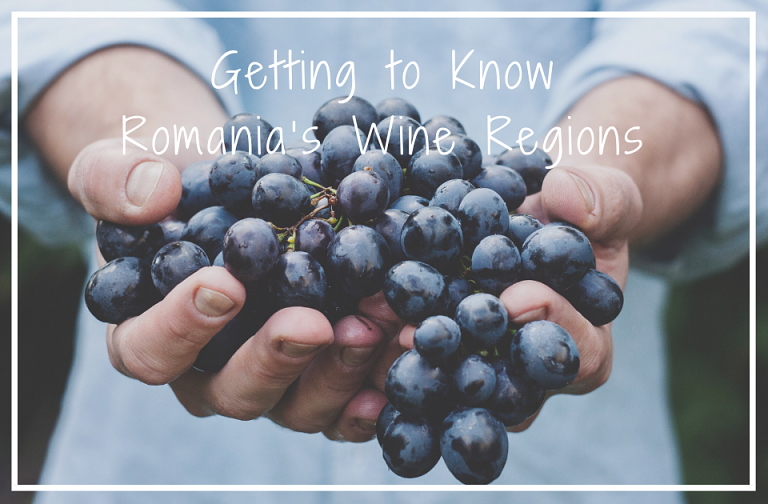Getting to Know Romania’s Wine Regions

Posted on Sun 20 Jun 2021
However, one thing that consistently flies under the radar is the breadth and quality of the wine from the country. Thanks to its geographical position, natural landscape and fertile soil, grapevines thrive in the country and produce some truly excellent wine. Here, we’ll be taking a look at the various wine-growing regions across Romania, to understand the sort of beverage you can expect to taste in each.
Romania has vineyards scattered across the country, some taking advantage of the Carpathian soil, while others enjoy the warmer temperatures of the south. Beginning at the north and working south, these are Romania’s wine regions.

Maramures and Crisana
Located in the north and north-west of the country, Maramures and Crisana experience some of the colder and slightly harsher weather that Romania receives throughout the year. Occasionally making use of the Carpathian Mountains to the east, the region most commonly grows white wines. Towns such as Valea lui Mihai, Silvania and Diosig are located closeby to the vineyards which are known for producing good quality wine. Red wine struggles to grow in this region because of the temperatures; however, the white has a strong acidic and fruity taste. Wines such as Chardonnay and Pinot Noir are grown at the Silvana vineyard. Here, sparkling wine is also produced using the Champenoise method, one of the few places in Romania to do so.
Moldavia
The Moldavia region is in the north-east of the country and covers much of the land that borders with Moldova. White wines typically flourish in the north of the region while reds find more success in the south; with wine producers located close to Panciu and Bujor. One of the major vineyards of the region, Averesti, was founded in the later 1800s when the then owner established a plantation of approximately 30 hectares. This encompassed a wide range of grape varieties, from local Romanian grapes to international flavours. This has now grown to 550 hectares and segregates the Romanian grapes from the international, allowing for unique characteristics.

Transylvania
The heartland of Romania, Transylvania is known as being the home of fictional icon Dracula. Somewhat lesser known is its impeccable wine-growing capabilities. Transylvania is home to a range of white wine vineyards that grow anything from local varieties to Chardonnay and Sauvignon Blanc. One of the most successful in the region is located closeby to Lechinta, a vineyard called Lilac. Winemaking in this region dates back as far as 2,300 years ago and has seen its fair share of change over that time, most notably the nationalisation by the communists during the 1940s. However, the vineyard is now owned by an Austrian enthusiast and produces small quantities that are perfect for the connoisseurs.
Banat
You’ll find the region of Banat in the west and is relatively scarce in terms of wine production areas. There are two notable locations towards the north of the region, one producing red and the other white; these are closeby to Teremia and Recaș. White wine has traditionally dominated these areas; however, more recently, red grapes have seen success along with a selection of table grape varieties. Quality is preferred to quantity in this area, which is especially notable if you were to visit the plantation at Recaș, as you can see the plantation and production first hand.

Muntenia and Oltenia
Covering much of the south of the country and home to the famed Balea Lake, the region of Muntenia and Oltenia mostly produces red wines, with some vineyards that produce both red and white. The temperature in the south lends itself to red grapevines with slightly balmier weather and longer summers. There are many vineyards in the region that are worth mentioning, including Catleya in the west and Lacerta Winery in Buzau in the East. Lacerta is just a one hour drive from the capital of Bucharest and presents visitors with stunning views across the plantation. You can also choose to taste the various blends and take a tour of the vault. The facility is a modern build and creates a dynamic contrast on the backdrop of rural Romania; something that should not be missed.
Dobrogea
The south-east region of Dobrogea is the smallest of all the regions, with the main focal point being the city of Constanta. Being the only coastal wine region of the country comes with its benefits, both in growing and in flavour. As many of the established wine-growing countries use coastal vineyards, it’s no surprise that Romania is making the most of its small coastline gift to create great-tasting drinks. A combination of red and white is grown in the region with the most notable winery being Vinuri de Macin. The river Danube flows beside the vineyard to enrich the soil, and the southerly location affords glorious summers, creating a great tasting grape. The vineyard offers both tours and tasting sessions allowing you to sample some of the produce and to understand the process of production. Since 2011, they have produced wine for the Royal House of Romania.

To best enjoy some of the country’s finest wines, a visit is a must! Why not explore the Danube Delta in Romania and pay a visit to one of Dobrogea’s excellent wineries? Our trips to Romania will take you on an adventure and allow you time to explore the country on your own as well, check them out here!
Read more from our blog here
